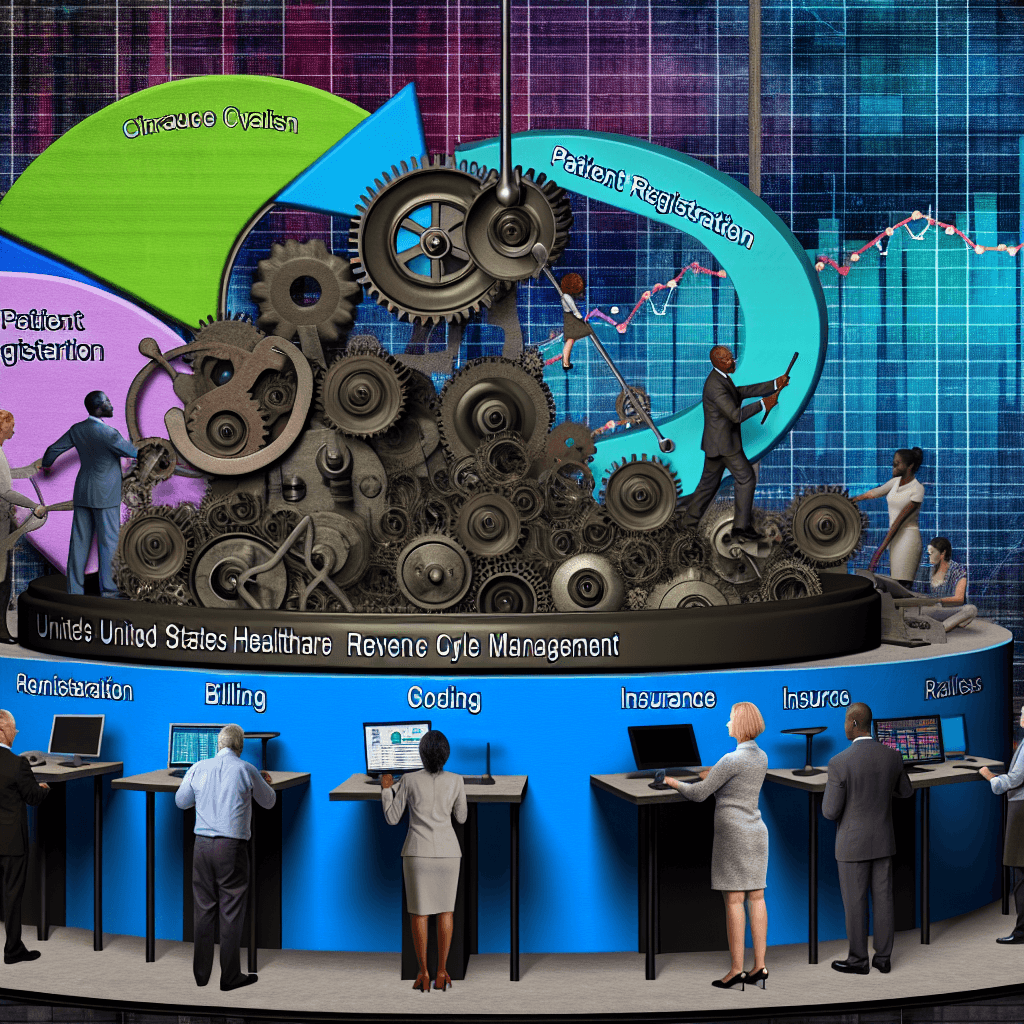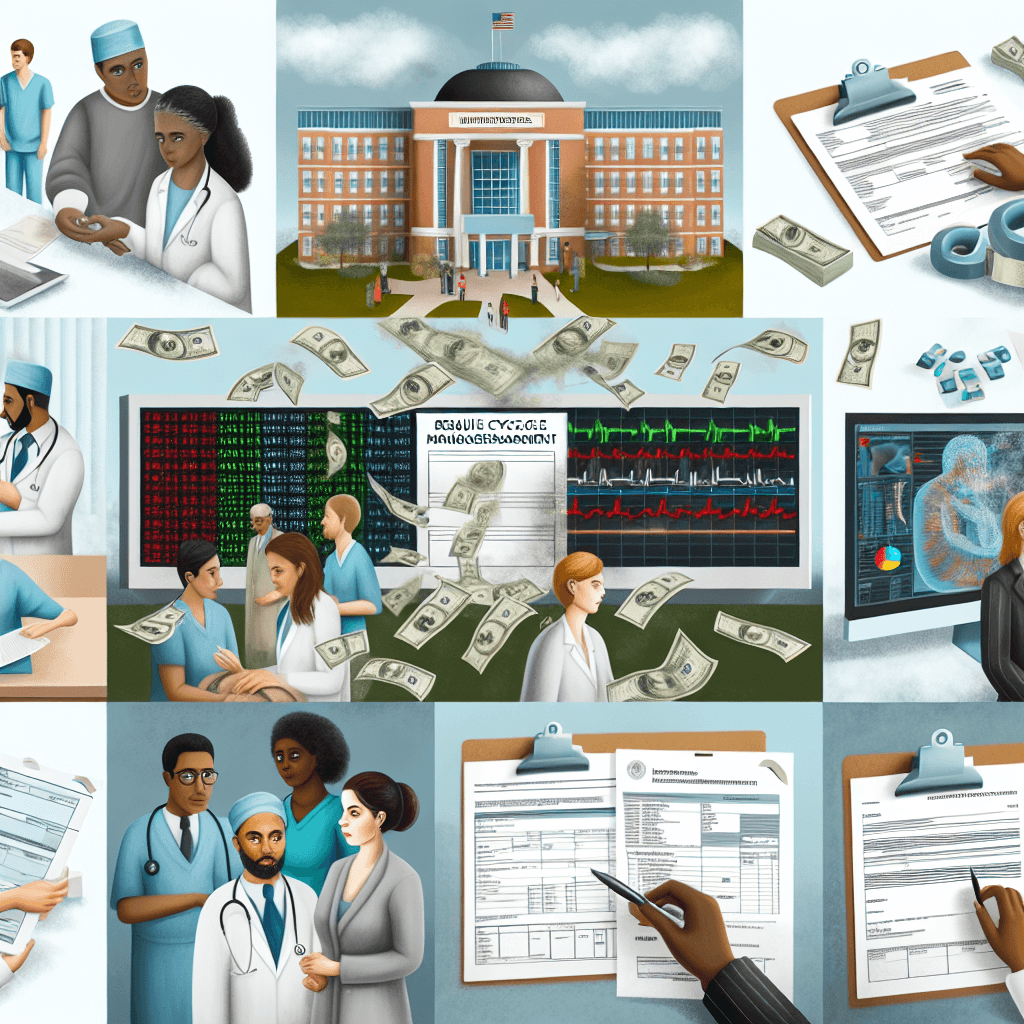Explore the U.S. healthcare revenue cycle management market trends, growth drivers, and key industry challenges.
United States Healthcare Revenue Cycle Management Market

Table of Contents
United States Healthcare Revenue Cycle Management Market

The United States healthcare revenue cycle management (RCM) market is a critical component of the healthcare industry, ensuring that healthcare providers are reimbursed for the services they provide. This article explores the intricacies of the RCM market, its current trends, challenges, and future outlook, providing a comprehensive overview for stakeholders in the healthcare sector.
Overview of Revenue Cycle Management
Revenue Cycle Management in healthcare is the financial process that facilities use to track patient care episodes from registration and appointment scheduling to the final payment of a balance. RCM unifies the business and clinical sides of healthcare by coupling administrative data, such as a patient’s personal information, with the treatment a patient receives and their healthcare insurance coverage.
Key Components of RCM
The RCM process encompasses several important steps:
- Pre-registration – collecting preliminary patient information before a visit.
- Registration – confirming patient information and enrolling them at the point of service.
- Charge Capture – converting medical services into billable charges.
- Claim Submission – submitting claims of billable fees to insurance companies.
- Coding – describing healthcare services with universal medical alphanumeric codes.
- Patient Collections – determining patient balances and collecting payments.
- Denial Management – correcting and resubmitting denied claims.
- Remittance Processing – applying or rejecting payments through remittance processing.
- Third-party Follow-up – pursuing collections of unpaid claims.
- Reporting – providing insights into the process for better decision-making.
Current Trends in the U.S. Healthcare RCM Market
The U.S. healthcare RCM market is currently undergoing significant transformations due to several trends:
- Integration of Advanced Technologies: The integration of artificial intelligence (AI) and machine learning (ML) is optimizing the billing processes, reducing errors, and increasing efficiency.
- Shift to Telemedicine: With the rise of telemedicine, especially during the COVID-19 pandemic, there has been a need to adapt RCM solutions to handle virtual care billing complexities.
- Emphasis on Patient-Centric Strategies: There is a growing focus on improving the patient payment experience by offering more transparency and flexible payment options.
- Increasing Adoption of Cloud-Based Solutions: Many healthcare providers are moving their RCM systems to the cloud to enhance security, scalability, and accessibility.
Challenges Facing the RCM Market
Despite the advancements, several challenges impede the efficiency of the RCM process:
- Regulatory Compliance: Keeping up with changing healthcare regulations and policies can be difficult.
- High Denial Rates: High denial rates for claims continue to affect the financial health of healthcare providers.
- Lack of Trained Professionals: There is a shortage of skilled professionals who understand both the clinical and administrative aspects of RCM.
- Data Security Concerns: As more data is digitized, ensuring the security and privacy of patient information remains a critical concern.
Case Studies and Examples
Several case studies highlight the effectiveness of optimized RCM systems:
- Case Study 1: A large hospital network implemented a new AI-driven RCM solution that reduced claim denials by 25% and increased revenue by 15% within the first year of adoption.
- Case Study 2: A mid-sized clinic switched to a cloud-based RCM system, which allowed them to reduce processing times by 30% and improve patient satisfaction scores regarding billing transparency and options.
Future Outlook
The future of the U.S. healthcare RCM market looks promising with several developments on the horizon:
- Increased Automation: Further automation of RCM processes through AI and ML will likely continue, reducing human error and operational costs.
- Greater Integration with Electronic Health Records (EHRs): Enhanced integration between RCM systems and EHRs will likely improve the accuracy and speed of data exchange.
- Expansion of Personalized Payment Solutions: As consumer demand for more tailored payment options grows, providers will likely continue to innovate in this area.
Conclusion
The U.S. healthcare revenue cycle management market is evolving rapidly, driven by technological advancements and changing consumer expectations. While there are challenges, the integration of new technologies and strategies promises to enhance the efficiency and effectiveness of healthcare billing processes. Stakeholders in the healthcare industry must stay informed and adaptable to navigate this dynamic market successfully.
In conclusion, understanding the complexities of RCM and implementing robust systems will be crucial for healthcare providers looking to optimize their operations and improve patient care outcomes. The future of healthcare RCM in the U.S. is bright, with significant opportunities for growth and improvement.








